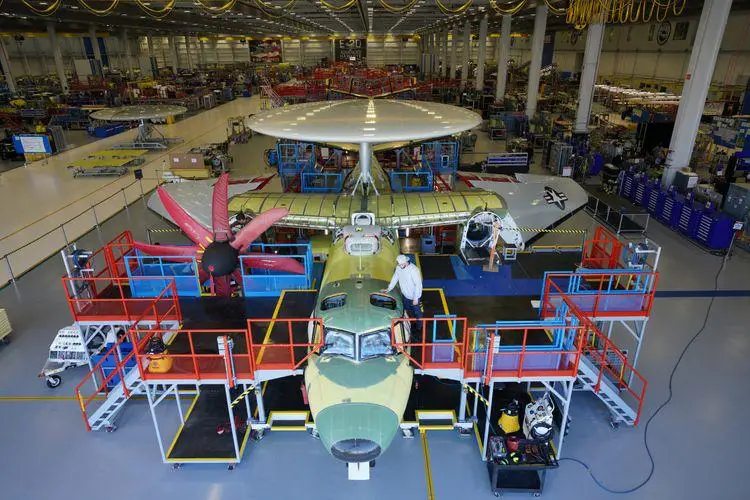Northrop Grumman Corporation successfully delivered the 51st U.S. Navy E-2D Advanced Hawkeye production aircraft, AA-52. The aircraft represents the last to be delivered under the Multi-Year Procurement (MYP) 1 contract. AA-52 is equipped with the Delta System/Software Configuration (DSSC) Build 3, which provides an additional leap in operational effectiveness and technology for the E-2D with the incorporation of aerial refueling and a dwell-based tracker. MYP 2 deliveries will begin this year, with increasing, game-changing capability enhancements for the Navy and joint force to outpace evolving threats.
The Northrop Grumman E-2 Hawkeye is an American all-weather, carrier-capable tactical airborne early warning (AEW) aircraft. This twin-turboprop aircraft was designed and developed during the late 1950s and early 1960s by the Grumman Aircraft Company for the United States Navy as a replacement for the earlier, piston-engined E-1 Tracer, which was rapidly becoming obsolete. The aircraft’s performance has been upgraded with the E-2B and E-2C versions, where most of the changes were made to the radar and radio communications due to advances in electronic integrated circuits and other electronics. The fourth major version of the Hawkeye is the E-2D, which first flew in 2007.
The latest E-2 version is the E-2D Advanced Hawkeye, which features an entirely new avionics suite including the new AN/APY-9 radar, radio suite, mission computer, integrated satellite communications, flight management system, improved T56-A-427A engines, a glass cockpit and aerial refueling. The APY-9 radar features an active electronically scanned array, which adds electronic scanning to the mechanical rotation of the radar in its radome. The E-2D includes provisions for the copilot to act as a “Tactical 4th Operator” (T4O), who can reconfigure his main cockpit display to show radar, IFF, Link 16 (JTIDS)/CEC and access all acquired data.
The APY-9 radar has been suspected of being capable of detecting fighter-sized stealth aircraft, which are typically optimized against high frequencies like Ka, Ku, X, C and parts of the S-bands. Small aircraft lack the size or weight allowances for all-spectrum low-observable features, leaving a vulnerability to detection by the UHF-band APY-9 radar, potentially detecting fifth-generation fighters like the Russian Sukhoi Su-57 and the Chinese Chengdu J-20 and Shenyang J-31. The E-2D could guide fleet weapons, such as AIM-120 AMRAAM and SM-6 missiles, onto targets beyond a launch platform’s detection range or capabilities.
















